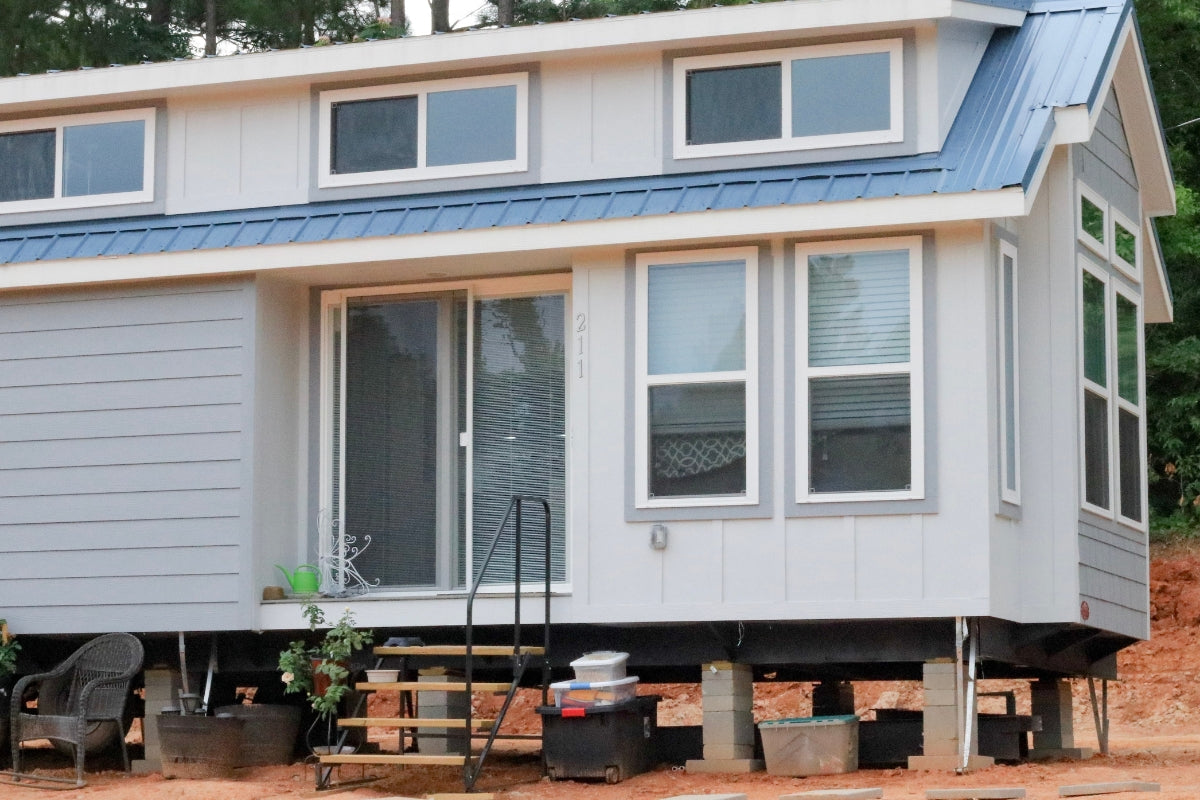This post delves deeply into the intricacies of tiny house parking, including advice on where to park your tiny home, how to choose the best spots, how to navigate campsites and RV parks, and how to build a feeling of community. Beyond the utilitarian aspects, it delves into the life-changing adventure that epitomizes small home living, in which locating the ideal parking space opens the door to a way of life that prioritizes community, sustainability, and shared experiences.
Choosing Your Towing Car
Looking for the appropriate tow vehicle is essential before starting your trip with RV parks and compounds. Reliable options for towing your small home include the Ford F-150, Chevrolet Silverado, and Toyota Tundra, all of which have great towing capacities. To ensure a smooth and effective towing experience, you should give priority to your vehicle's towing capacity, payload capacity, stability, and fuel efficiency.
If you're looking for a versatile and reliable option, we recommend looking for used Jeep Cherokee for sale. This adventure companion, with its renowned versatility and off-road capabilities, presents an appealing choice for individuals in search of a dependable towing companion.
Selecting the Right Location
Selecting the perfect spot for your tiny house involves more than just finding available land. It requires a deep understanding of local zoning laws and regulations. Researching areas with progressive zoning laws or established tiny house communities can pave the way for a smoother living experience. Additionally, considering accessibility to daily needs ensures that the convenience of urban living isn't sacrificed.
Choosing the best spot to park is also closely related to the capabilities of your tow car. Consider the terrain and accessibility during your exploration, ensuring that your towing vehicle can navigate the surroundings comfortably. This thoughtful approach safeguards both your vehicle's well-being and contributes to a seamless tiny house living experience.
Other characteristics to look for include:
- Adherence to parking regulations for towing vehicles.
- Infrastructure support with adequate roads, parking facilities, and services.
- Communities that embrace the presence of towing vehicles.
- Proximity to essential services like gas stations and mechanics.
- Safety considerations, prioritizing secure and well-lit locations.
- Weather conditions that align with the towing vehicle's capabilities.
Understanding RV Parks and Campgrounds
Distinguishing between RV parks and campsites is crucial for a seamless transition into the tiny home community. Comfort and convenience are provided by services like water, power, and sewage hookups that are specifically designed to suit recreational vehicles in RV parks. However, a greater connection to nature and a more rural atmosphere with fewer conveniences may be found in campgrounds.
Discovering RV Parks and Campgrounds
Embarking on your tiny house journey involves locating suitable parking, and here are key avenues to explore:
1. Online Directories and Apps
Use dedicated platforms like RV Park Reviews, Campendium, and AllStays for comprehensive information and user reviews.
2. National and State Park Systems
Explore RV-friendly sites within national and state park systems, such as the National Park Service (NPS) and state-specific park networks.
3. Membership Programs
Join RV membership programs like Good Sam Club, Passport America, or KOA for campground discounts and access to a network of RV-friendly sites.
4. Local Tourism Websites
Check official tourism boards or visitor center websites for insights into nearby RV parks, including local attractions.
5. Social Media and Forums
Engage with the RV community on social media and forums to gather firsthand recommendations and tips from fellow travelers.
6. State Department of Natural Resources
Discover materials from state departments of natural resources that include details on state parks, public lands, and camping possibilities.
7. Commercial Campground Chains
Seek for well-known companies like Jellystone Park, Thousand Trails, or Encore RV Resorts that have a history of growth and providing facilities.
By navigating these avenues, you can uncover diverse RV parks and campgrounds, enhancing your tiny house living experience.
Amenities and Facilities
The facilities that RV parks and campsites provide are important considerations while assessing possible parking locations. The availability of recreational opportunities, Wi-Fi, laundry facilities, and common areas may greatly improve the quality of life. In addition to making daily living more comfortable, these features help small home occupants feel more connected to one another.
.jpg)
Navigating Park Regulations
Owners of tiny houses have to abide by a number of rules, such as weight and size limitations set by several parks. Making bookings in advance, especially in busy places, and making sure your tiny house conforms with these requirements will help to avoid problems and guarantee a stress-free trip. The following guidance will help you ensure a seamless and legal transition as you get ready to move into an RV park or campground:
- Make sure your tiny home conforms with any weight and/or size limits that may apply to vehicles entering the park or campsite.
- Familiarize yourself with reservation requirements and check-in procedures to secure your parking spot and avoid any complications upon arrival.
- Keep in mind the park's maximum stay length and respect these restrictions in order to keep the peace with other park visitors and administration.
- To guarantee a pet-friendly atmosphere, familiarize yourself with the park's pet restrictions, such as those pertaining to leash requirements and approved locations.
- Designated quiet times should be respected and followed, promoting a thoughtful and serene community environment for all inhabitants.
- Abide by waste disposal guidelines, ensuring proper disposal of trash and wastewater to maintain cleanliness and environmental responsibility.
- Follow any rules related to the use of park amenities, such as communal spaces, recreational facilities, and common areas, contributing to a positive community experience.
Environmental Considerations
The tiny house movement places a strong emphasis on sustainability, and parking spots are no exception. Reducing the environmental effect is facilitated by using eco-friendly items, following recycling regulations, and disposing of garbage responsibly. In keeping with the movement's dedication to environmentally responsible living, many small house owners also include solar electricity into their houses. Living in a compact house requires you to prioritize sustainable activities. Here are some additional environmental factors you should include into your lifestyle:
1. Solar Power Integration
Examine how to incorporate solar energy into your tiny house to use renewable energy sources instead of relying on conventional power systems.
2. Water Conservation Practices
Reducing water usage and promoting sustainability may be achieved by using water-saving techniques such installing low-flow fixtures and collecting rainwater.
3. Using Environmentally Friendly Products
You may reduce your environmental effect even if you live in a tiny place by making routine eco-friendly purchases like cleaning supplies and personal care items.
4. Reusing and Putting Away
Install composting and recycling facilities to manage organic waste and lower the total quantity of items dumped in landfills. This will support the development of a circular and sustainable economy.
5. Native Landscaping
Consider native landscaping around your tiny house, utilizing region-specific plants that require less water and maintenance, promoting biodiversity and enhancing the natural ecosystem.
Building a Tiny House Community
An essential part of living in a little house is being involved in the community. To improve the experience of your trip, engage in local activities, make relationships with like-minded individuals, and participate in them. Moving into a tiny house improves the experience many times over, especially when you get to know a vibrant community that values sustainability, simplicity, and friendship.
Conclusion
Parking for tiny houses involves more than just adhering to laws and locations. This is a chance to develop a way of living that is consistent with principles like sustainability, shared relationships, and simplicity. Tiny home aficionados may not only locate appropriate parking but also start a life-changing journey into minimalist living by traversing RV parks and campsites with consideration and a comprehensive viewpoint.






Share: